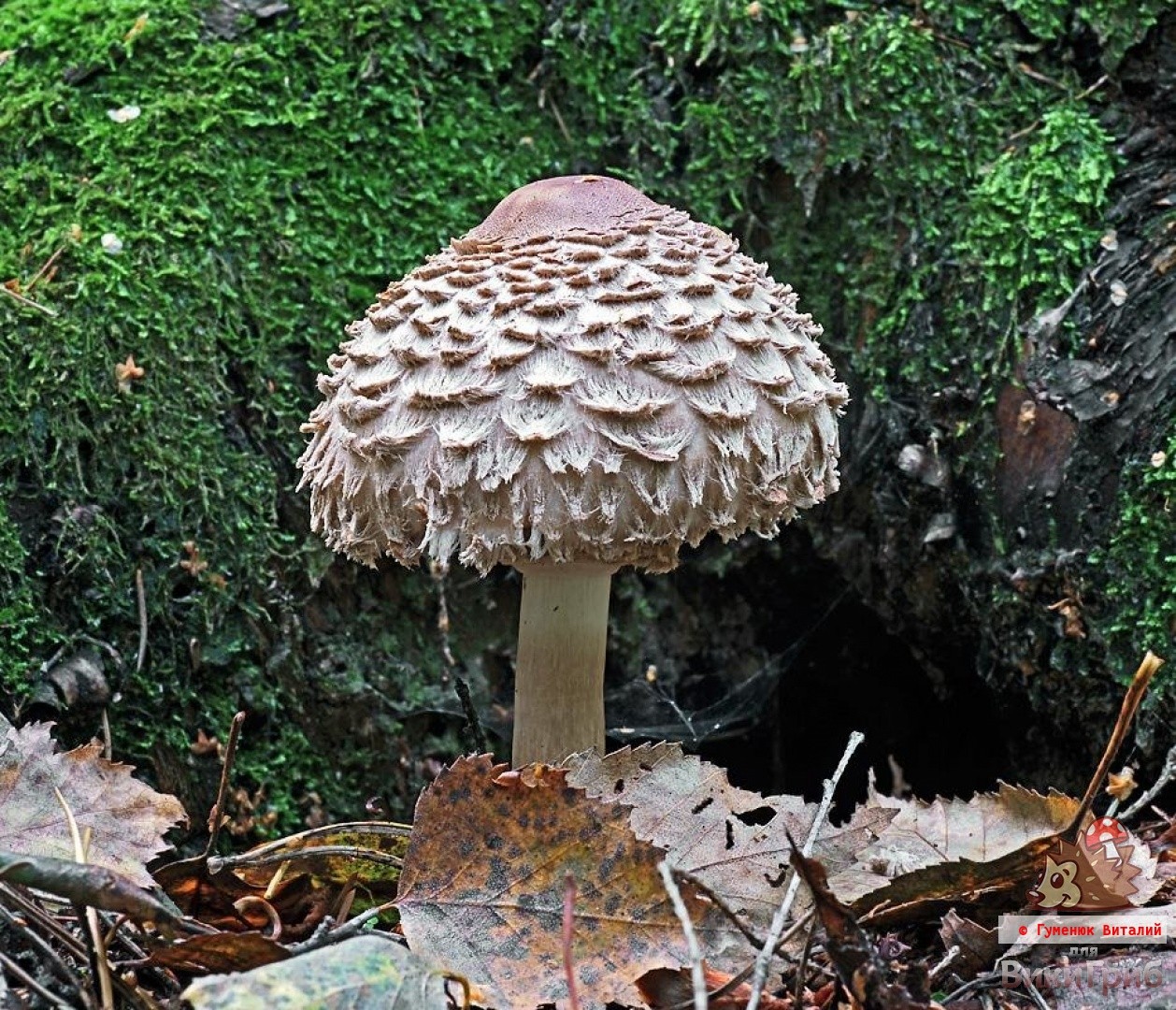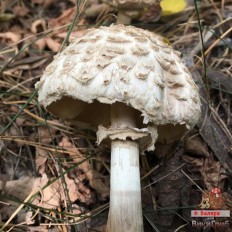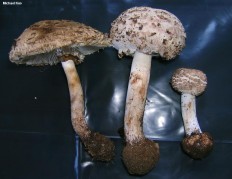Contents
Chlorophyllum Olivier (Chlorophyllum olivieri)
- Division: Basidiomycota (Basidiomycetes)
- Subdivision: Agaricomycotina (Agaricomycetes)
- Class: Agaricomycetes (Agaricomycetes)
- Subclass: Agaricomycetidae (Agaricomycetes)
- Order: Agaricales (Agaric or Lamellar)
- Family: Agaricaceae (Champignon)
- Genus: Chlorophyllum (Chlorophyllum)
- Type: Chlorophyllum olivieri (Chlorophyllum Olivier)
- Umbrella Olivier
:
- Umbrella Olivier
- Lepiota olivieri
- Macrolepiota rachodes var. olivieri
- Macrolepiota olivieri

Mushroom-umbrella Olivier is very similar to the Mushroom-blushing umbrella. Differs in olive-gray, gray or brownish scales, which do not contrast with the background, and microfeatures: slightly smaller spores,
head: 7-14 (and up to 18) cm in diameter, at a young age spherical, ovoid, widening to flat. The surface is smooth and dark red-brown in the center, splitting into concentric, pale brown, flat, erect, flat scales. Many often slightly curved scales on a fibrous background give the cap a shaggy, ragged appearance. The skin of the cap is cream-colored, somewhat translucent when young, becoming uniformly gray with age, to olive brownish, greyish brown in old age. The edge of the cap is obtuse, covered with flaky pubescence.
plates: loose, wide, frequent. 85-110 plates reach the stem, with numerous plates, there are 3-7 plates between each pair of full plates. White when young, then cream with pinkish spots. Edges of plates with fine fringe, whitish at a young age, later brownish. Turn red or brown where damaged.
Leg: 9–16 (up to 18) cm high and 1,2–1,6 (2) cm thick, about 1,5 times longer than the cap diameter. Cylindrical, sharply thickened towards the base. The base of the stem is sometimes curved, covered with white-tomentose pubescence, hard, brittle, and hollow. The surface of the stem above the annulus is whitish and smooth to longitudinally fibrous, under the annulus it is whitish, bruising (spotting) from red-brown to brown, gray to ocher-brown in older specimens when touched.
Pulp: in a hat thick in the center, thin towards the edge. Whitish, on the cut it immediately becomes orange-saffron-yellow, then turns pink and finally red-brown. Whitish in the stalk, reddish or saffron with age, when cut it changes color, like the flesh of the cap: white turns orange to carmine red.
Ring: thick, persistent, membranous, double, mobile, white with darkening of the lower surface in old age, the edge is fibrous and frayed.
Smell: different sources give very different information, from “mild, slightly mushroomy”, “pleasant mushroomy” to “a bit like a raw potato”.
Taste: soft, sometimes with a slight hint of nutty, pleasant.
spore powder: White to pale yellowish.
Microscopy:
Spores (7,5) 8,0-11,0 x 5,5-7,0 µm (average 8,7-10,0 x 5,8-6,6 µm) vs. 8,8-12,7 .5,4 x 7,9-9,5 µm (average 10,7-6,2 x 7,4-XNUMX µm) for C. rachodes. Elliptical-oval, smooth, dextrinoid, colorless, thick-walled, with indistinct germ pore, dark reddish brown in Meltzer’s reagent.
Basidia 4-spored, 33-39 x 9-12 µm, club-shaped, with basal clamps.
Pleurocystidia are not visible.
Cheilocystidia 21-47 x 12-20 microns, club-shaped or pear-shaped.
From summer to late autumn. Chlorophyllum Olivier is widely distributed in European countries. Fruiting bodies occur both singly, scattered, and form rather large clusters.
Grows in both coniferous and deciduous forests of various types and shrubs of all kinds. It is found in parks or gardens, on open lawns.

Red umbrella (Chlorophyllum rhacodes)
It is distinguished by light, white or whitish skin on the cap, between contrasting brownish scales dense at the ends. On the cut, the flesh acquires a slightly different color, but these subtleties are visible only in fairly young mushrooms.

Chlorophyllum dark brown (Chlorophyllum brunneum)
It differs in the shape of the thickening at the base of the leg, it is very sharp, “cool”. On the cut, the flesh acquires a more brownish tint. The ring is thin, single. The mushroom is considered inedible and even (in some sources) poisonous.

Umbrella motley (Macrolepiota procera)
Has a higher leg. The leg is covered with a pattern of the finest scales.
Other types of macrolepiots.
Olivier’s parasol is a good edible mushroom, but can cause nausea and sometimes indigestion in some people, and allergic reactions are possible.










